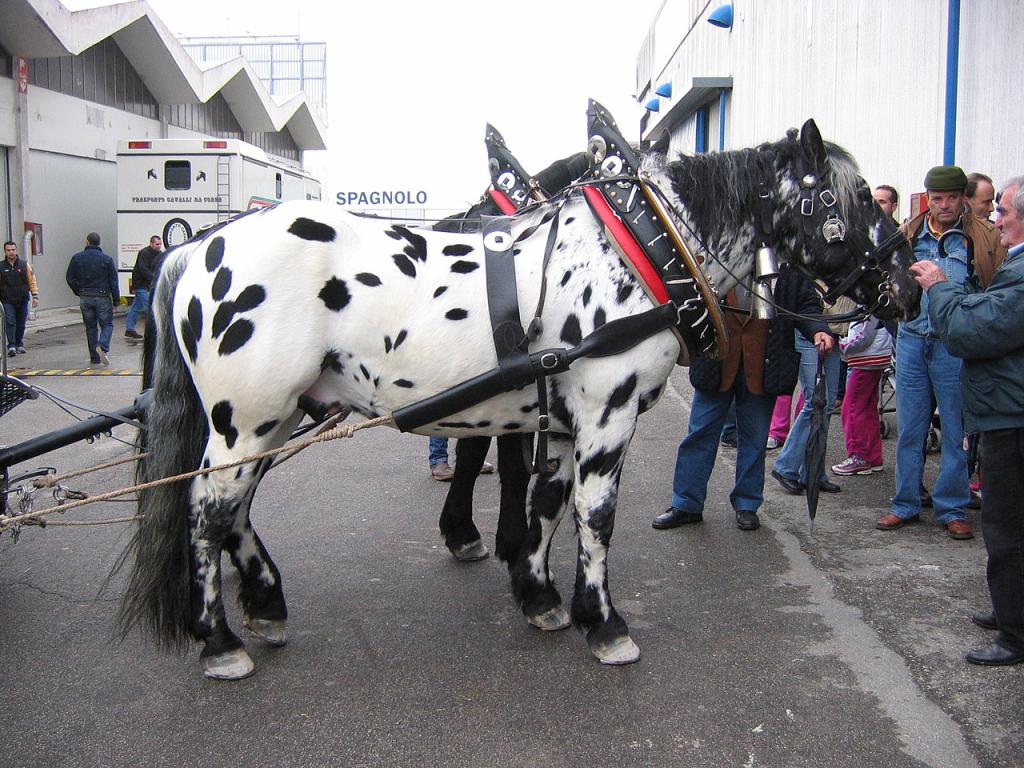
Continent: Europe
Country: Austria
Weight: 700 – 900 kg
Height: 155 – 165 cm
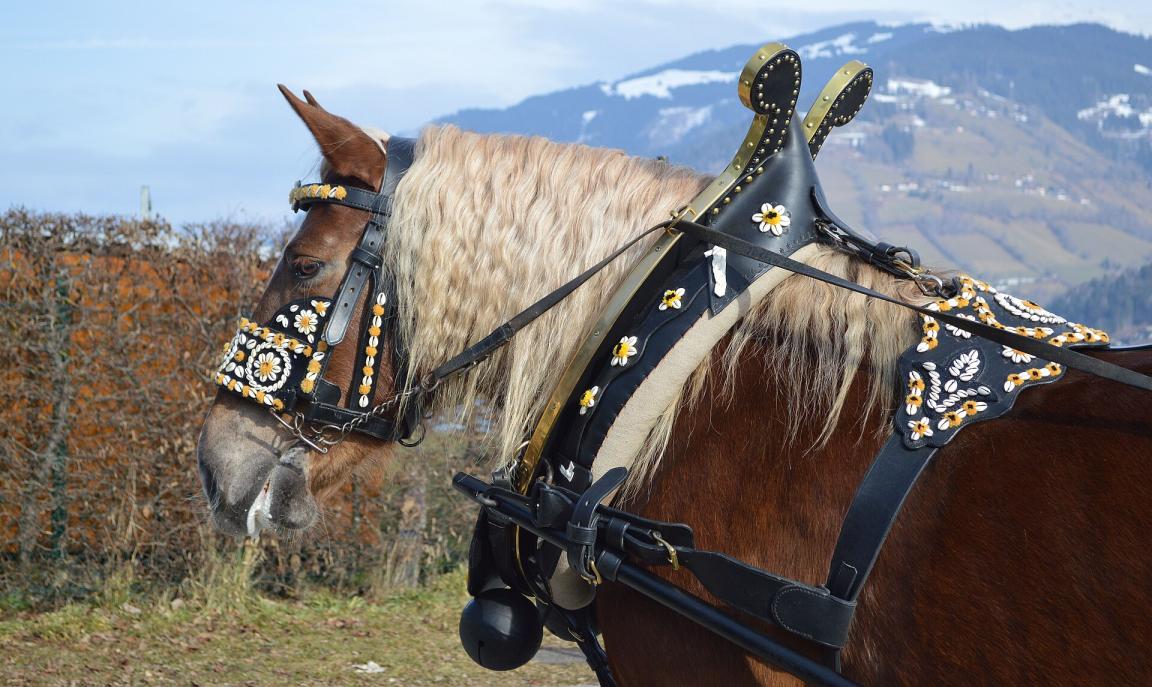
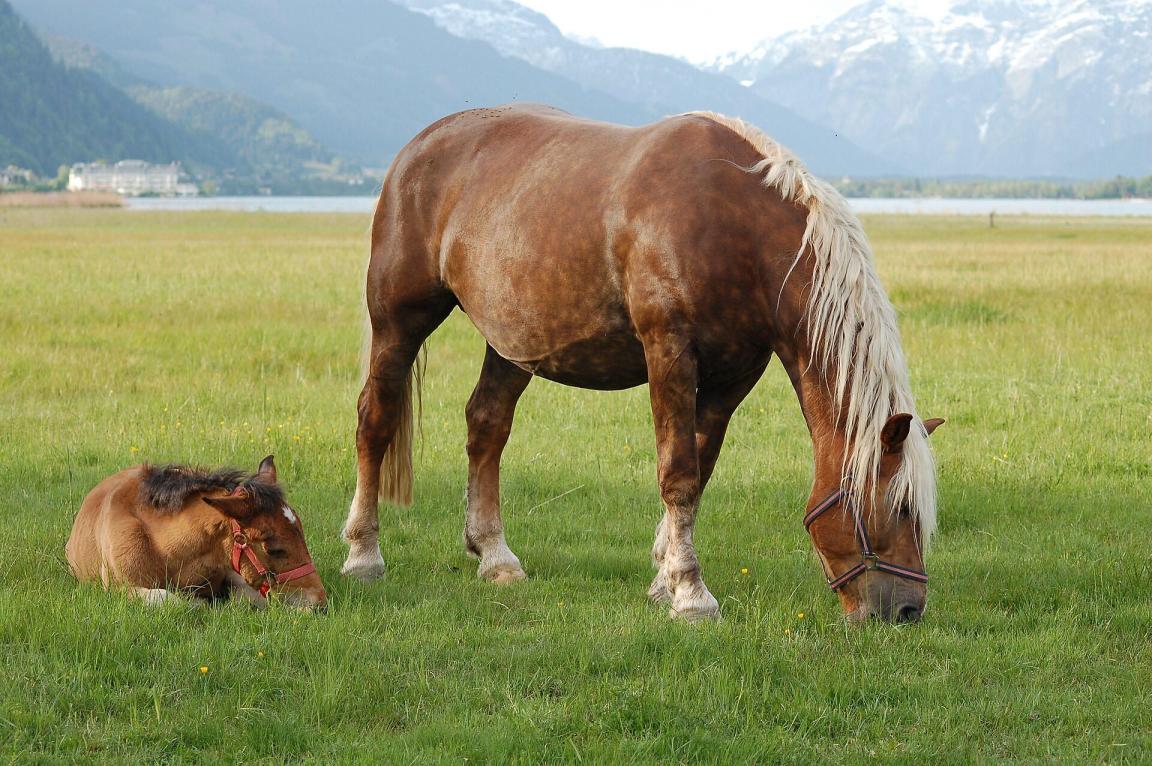
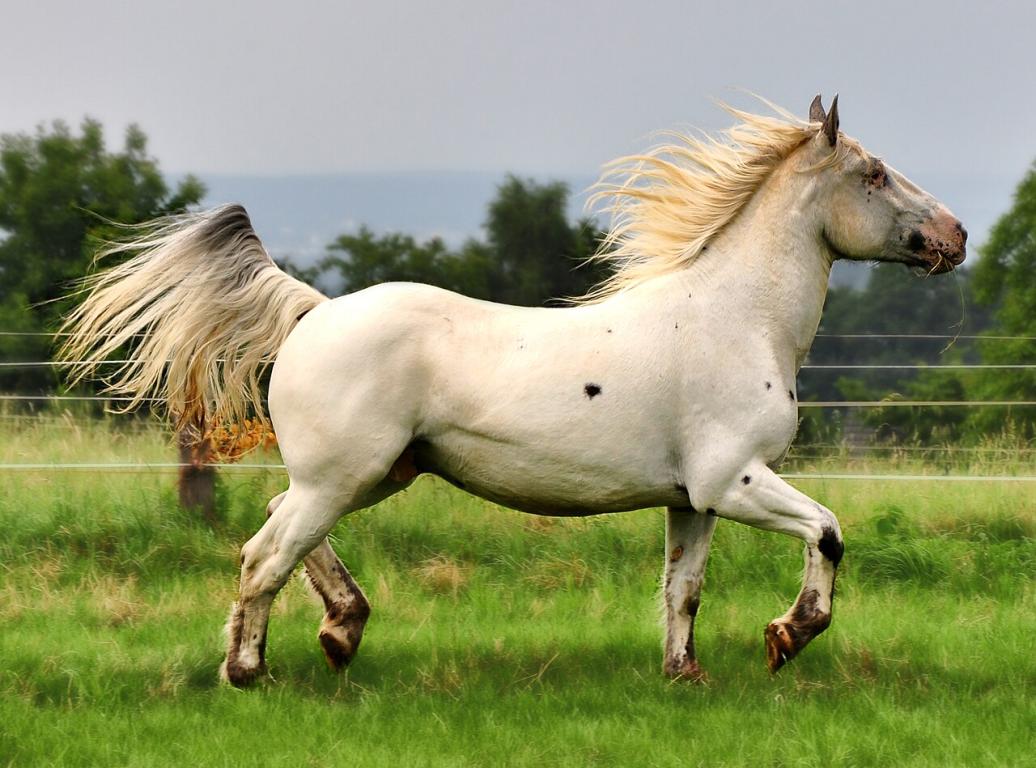
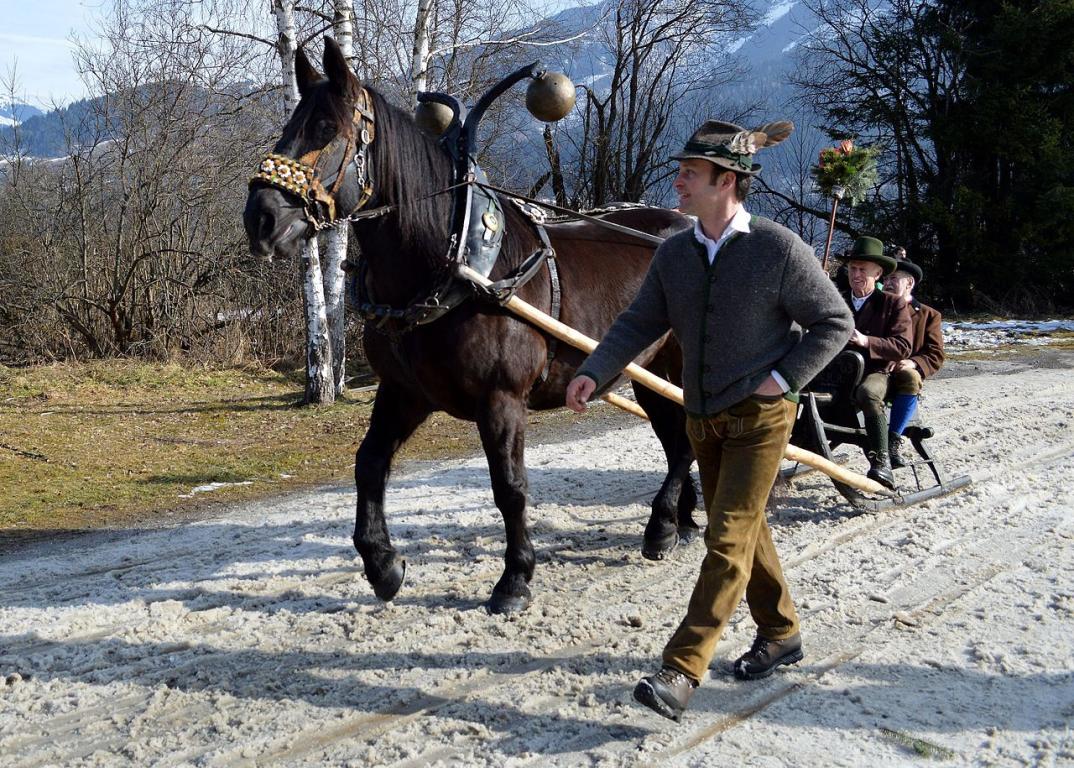
The Noriker is a draft horse breed originating from the Alpine regions of Austria, primarily around Salzburg, in the central-western part of the country. Its name comes from “Noricum,” a former Roman province that roughly corresponds to this region.
It was in these areas that the Romans introduced heavy horses during their conquest of the northern Alps, laying the foundations for what would become the Noriker.
During the Middle Ages, breeding was mainly carried out by monasteries, and later by the Archbishops of Salzburg, who implemented strict selection methods. Starting in the 16th century, crosses with Burgundian, Andalusian, and Neapolitan horses increased the breed’s size and added elegance to its appearance.
This Baroque influence can still be seen today in the Noriker’s powerful build and distinctive coat patterns.
The breed proved perfectly suited to the steep terrain and harsh climate of the Alps, making it indispensable for agriculture, forestry work, and transport in isolated mountain villages.
In the 19th century, further influences (such as Norman, Cleveland Bay, Holsteiner, and Clydesdale) helped refine the breed.
However, in 1903, with the creation of the Austrian studbook, the Noriker was officially closed to external bloodlines in order to preserve its genetic purity and traits specific to mountain life.
To this day, the Noriker is regarded as a living symbol of Alpine rural heritage, deeply connected to the culture and traditions of Austria, particularly in the regions of Salzburg, Carinthia, and Tyrol.
The Noriker is primarily bred in the Alpine regions of Austria, especially in the federal states (Länder) of:
-Salzburg (the historical birthplace of the breed)
-Carinthia
-Tyrol
-Upper Austria
-Styria
These regions are characterized by mountainous terrain, harsh climatic conditions, and a strong rural tradition. The Noriker is perfectly suited to this environment thanks to its hardiness, sure-footedness, and ability to work in difficult terrain.
Outside of Austria, significant breeding also occurs in southern Germany, particularly in Bavaria, where a lighter variant of the Noriker is sometimes called the Oberlander. Another local type, the Abtenauer, is smaller and bred in the Abtenau region (Salzburg).
Smaller breeding populations can also be found in northern Italy, especially in border areas of South Tyrol, due to shared Alpine cultural heritage.
Today, Noriker breeding is strongly supported by genetic heritage conservation programs and is strictly regulated, particularly through the Austrian studbook and local breeders' associations dedicated to preserving the breed.
The Noriker holds notable genetic importance as a cold-blooded Alpine draft horse, descended from an ancient and carefully selected lineage. Its genetic purity, preserved since the creation of the closed studbook in 1903, makes it a valuable resource for the preservation of equine biodiversity in Europe.
This breed represents:
-A unique genetic line, shaped by centuries of selection in demanding mountainous environments, resulting in outstanding traits such as endurance, hardiness, sure-footedness, and longevity.
-A key asset in conservation programs for local and heritage breeds, especially in Alpine countries, where the Noriker plays a vital role in maintaining traditional rural landscapes.
-A potential foundation for improving other draft breeds seeking greater agility, hoof strength, and docility, without sacrificing power.
-A reliable option for preserving rustic bloodlines in the face of climate change, and for developing economical, robust horses suited to sustainable farming and eco-grazing.
The breed’s structured selection through distinct bloodlines Vulkan, Nero, Diamant, Schaunitz, and Elmar further enhances its internal genetic diversity. Each line offers specific traits in conformation, temperament, and coat patterns, making the Noriker a strong model for thoughtful, long-term genetic management in equine breeding.
The Noriker is one of the oldest draft horse breeds in Europe. Its origins date back to Roman times, when heavy horses were introduced into the province of Noricum (present-day central Austria) to meet the demands of transport and mining. These robust horses were selectively bred for centuries in the Austrian Alpine regions, particularly around Salzburg.
During the Middle Ages, breeding was managed by monasteries, and from 1565 onward, by the authority of the Prince-Archbishop of Salzburg. It was during this period that the breed began to take shape, notably through the introduction of Andalusian and Neapolitan bloodlines, which brought elegance, flexibility, and coat variety to this mountain horse. Later, crossbreeding with Burgundian, Norman, Cleveland Bay, Holsteiner, and Clydesdale horses further refined its morphology.
In 1903, the foundation of the Austrian Noriker studbook marked a major turning point: the breed was declared closed, meaning that only horses born to Noriker parents could be registered and bred. This period also saw the establishment of the breed’s five main bloodlines: Vulkan, Nero, Diamant, Schaunitz, and Elmar, each with its own distinct morphological, temperamental, and aesthetic traits.
The Noriker experienced a golden age between the World Wars, widely used for agriculture, freight transport, and forestry work in mountainous regions. However, starting in 1968, agricultural mechanization led to a sharp decline in population, and some lines came close to extinction.
In the 1980s, preservation programs were launched in Austria and Germany, supported by passionate breeders and institutional partners. The Noriker made a comeback, thanks to its cultural significance, adaptability to rural tourism, and its value as a living heritage.
Today, the Noriker is regarded as a symbolic horse of the Austrian Alps, combining strength, hardiness, beauty, and gentleness, and continues to be carefully bred in its native region.
The Noriker is renowned for its calm, stable, and cooperative temperament. Although it is a powerful draft horse, it stands out for its naturally docile nature, making it a trustworthy and reassuring working partner, even for novice handlers.
It is also known to be:
-Easy to handle, even in noisy or unfamiliar environments
-Attentive and intelligent, capable of learning routines and adapting to different tasks
-Resilient to stress, making it an excellent companion for leisure activities, equestrian tourism, or even animal-assisted therapy
Despite its massive build, the Noriker can show a certain liveliness and agility, particularly among the lighter bloodlines. Some individualy especially from the Schaunitz line are known to be more energetic and spirited, while remaining manageable.
This blend of quiet strength and adaptability explains the Noriker’s success in a wide range of uses, from traditional driving and mountain trekking, to Alpine folk festivals and ceremonial events.
For several decades, the Noriker has experienced a renewed interest, particularly in Alpine regions where it is regarded as a living symbol of rural heritage.
Several positive trends suggest a promising future for the breed:
-Revival of local breeds: In a context where sustainability and agricultural resilience are increasingly valued, the Noriker is gaining recognition as an eco-friendly working horse, well suited to environmentally respectful farming systems, especially in mountain agriculture and eco-grazing.
-Growth of rural and cultural tourism: Used in traditional driving, folk festivals, shows, and sleigh rides, the Noriker appeals to visitors seeking authentic experiences and a connection to regional heritage, boosting its visibility in tourist circuits across Austria and southern Germany.
-Structured breeding and active studbook: The breed benefits from a closed studbook and rigorous genetic selection, with particular attention paid to maintaining line diversity, preserving traditional coat patterns (especially spotted types), and ensuring functional versatility.
-Targeted exports: While the Noriker remains largely concentrated in its native area, small-scale breeding programs are emerging abroad, led by enthusiasts or professionals seeking a docile, strong, and visually striking horse, especially for driving, therapy, or historical reenactment.
Challenges :
-Preserving genetic diversity among less represented bloodlines (e.g., Elmar, Schaunitz)
-Avoiding excessive morphological standardization
- Finding sustainable economic outlets for breeders operating outside traditional systems
In summary, the Noriker’s future appears promising, provided its original qualities hardiness, modesty, and typicality are preserved, while its strengths are promoted in modern, sustainable, and culturally grounded uses
The Noriker is generally considered a robust and hardy breed, shaped by centuries of selective breeding in demanding mountainous environments. It is renowned for its natural resistance to disease, longevity, and low-maintenance care.
However, as with any ancient breed with a relatively limited population, some points of attention must be considered:
-Low genetic predisposition to defects, but closely monitored by the studbook: strict breeding protocols and regular testing help minimize the occurrence of hereditary issues, particularly affecting limb conformation or structural soundness.
-Certain bloodlines—especially those with distinctive coat patterns (e.g., the Elmar line producing spotted horses)—require careful genetic management to avoid excessive inbreeding.
-Light feathering on the legs helps reduce the risk of skin conditions like mud fever, though basic care remains essential in wet or muddy environments.
-Hooves are typically hard and well-formed, well suited to mountain terrain, but require regular trimming and maintenance when the horse is used on flat or abrasive surfaces.
Finally, the Noriker is a slow-maturing breed. Providing a balanced and adapted diet during the early years is crucial to prevent joint issues associated with excessive or rapid weight gain.
Natural, slow, and very regular gait. The Noriker has a broad, steady, and sure-footed walk, well suited for rough or uneven terrain.
Lively and elastic, with strong hindquarter engagement. Despite its massive build, the Noriker shows good extension and fluidity in the trot.
The canter is rarely used in this breed, but when seen (e.g., at liberty), it is smooth, rounded, and well-cadenced.
Born on 01/01/1887
Founding stallion of the Vulkan lineage, the most widespread today. Sought after for his strength, docility, and harmonious conformation.
Born on 01/01/1900
Ancestor of the Nero lineage, known for producing horses with strong backs, remarkable movement, and excellent work aptitude.
Born on 01/01/1903
Key representative of the Diamant lineage, appreciated for his medium size and lively temperament, ideal for Alpine work.
Born on 01/01/1896
Founding stallion of the Schaunitz lineage, known for passing on a more energetic temperament and dynamic musculature.
Born on 01/01/1896
Founder of the Elmar lineage, associated with the breed’s distinctive spotted coats. A major contributor to the genetic diversity of the Noriker.

Discover one of the oldest draft horse breeds in Europe! These colorful horses will take us on rides, country rides, and even play in the wild! Join me on a journey to southern Bavaria and learn about the breed with the Bavarian Mammut Instagram stars!